

Binocular Reviews Home > Birdwatching Guides > Birding Binoculars
Buyers Guide to the
>> Skip the blurb, show me your recommendations
 Whilst working as a safari guide, I would always have on me a pair of optics that were great for general outdoor and wildlife uses. However they also needed to be easy to carry and compact as I would also often be lugging about other gear and on top of that they needed to more than hold their own as birdwatching binoculars!
Whilst working as a safari guide, I would always have on me a pair of optics that were great for general outdoor and wildlife uses. However they also needed to be easy to carry and compact as I would also often be lugging about other gear and on top of that they needed to more than hold their own as birdwatching binoculars!
So for me and my particular circumstances, what made the best birding binoculars was a little different to a person who enjoys backyard birding for example.
But what if you are a twitcher who travels long distances in your car to catch that once in a life time glimpse of a rare bird.
Or what if you are after an instrument specifically for birdwatching in a forest?
Or let's say you are a birdwatcher who lives by the coast and thus need to get a better view at longer distances and in wide open areas?
Whilst we are all birders, as you can see our requirements are all slightly different and so it can make deciding on how to choose the right pair seem quite difficult as there is no one size fits all solution.
However instead of just doing what most other guides and review sites do and just list a bunch of instruments for you to choose from, claiming that they are all the best, in this guide I will go over in detail what you need to look for and how you can go about choosing the best pair for your particular needs and budget as well as offer some recommendations based on the binos that I have actually fully tested and reviewed.
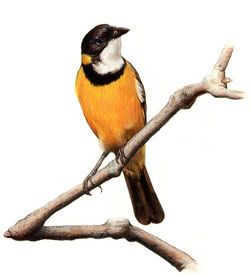 Which Binoculars for Bird Watching?
Which Binoculars for Bird Watching?As we have discovered, within the general field of birding there are many different sub categories. So what I mean by this is observing birds over long distances in wide open areas like at the coast or near a lake is very different to going birding in a thickly wooded forest.
So actually it is impossible to say that this is the best birding binocular and leave it at that, you have to decide if you need a pair for a specific niche or if you are looking for a good all round birding binocular that will perform well in a variety of different situations.
Once you have answered this, then we can now take a look at and understand how the different features and specifications on a binocular affect it and it's performance and rate them in terms of their importance for your type of birding.
Then all you have to do is find which binoculars have the most or if possible, all the features that you are looking for in your price range.
So let's get started:

Getting closer for a better view is the main reason you are looking for binoculars for birds and thus it makes sense that the optical magnification, zoom, or as some people call it the 'power' of the instrument is the first place to start.
However because you are trying to get as close to the bird to distinguish as much detail as possible, most people new to birding assume that the binoculars with the most powerful magnifications are the best...
Bigger is not (always) better!
There are a number of drawbacks to high powered binoculars the main ones are:
You will get a narrower field of view (FOV), less apparent depth of focus, a less bright image and higher magnifications also make it harder to keep a steady, shake free image as even the slightest movement is magnified.
There are a few things can be done to make the view through binoculars more steady, like attaching your binocular to a tripod using and adapter or even electronically powered stabilization, like the excellent range of Canon Image Stabilized binoculars, but this does not solve the other problems of having a smaller field and depth of view.
If you plan on using one pair of binoculars for all your bird spotting in a variety of situations, an 8x magnification is the most popular choice for a few reasons:
Wider field of view. You spot a bird high up in a tree and quickly raise your binoculars to your eyes. The wider the field of view, the more likely that your aim will be correct and that the bird will instantly be in the field of view, without having to search about for it. This is especially true for smaller, fast moving birds that don't stay put. Lower magnification in binoculars means a wider field of view, so many birders prefer 8x to 10x.
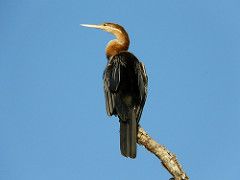 Better image stability. More power isn't always a plus in a handheld optic. A 10x image is shakier because any hand movement is magnified as much as the image is. Many people find they can actually see more detail hand holding 8x than 10x binoculars.
Better image stability. More power isn't always a plus in a handheld optic. A 10x image is shakier because any hand movement is magnified as much as the image is. Many people find they can actually see more detail hand holding 8x than 10x binoculars.
Better with glasses. When wearing eyeglasses, your eyes are positioned farther away from the eyepieces. How far back your eyes can be and still see the whole picture is called eye relief. It's much easier to find 8x binoculars with enough eye relief to work with your glasses than it is to find 10x.
So to sum up: 7x or 8x binoculars will work well in most types of terrain and in a wide variety of situations, forested areas to open fields. The images tend to be brighter with wider fields of view than higher powered binoculars. The wider field of view makes it easier to follow fast moving birds as well as scan for birds in the distance.
With 10x and even more powerful binoculars you will get more detail which is good for spotting birds of prey, waterfowl, and large birds or wildlife. These birds tend to be slower moving and are often out in the open, where the narrow field of view will also not be such an issue. When using a very high-powers (approx. 12x or more), you will need a very steady hand or tripod or some sort of image stabilization and it is very important to stay away from cheap binoculars with high magnifications.
For more on using 10x binoculars, read my in-depth article on 10x42 Binoculars for Bird Watching where I discover that for some people and in some circumstances, 10x42 binoculars may be the ideal choice for your birding binoculars.
(importance of magnification 8/10)
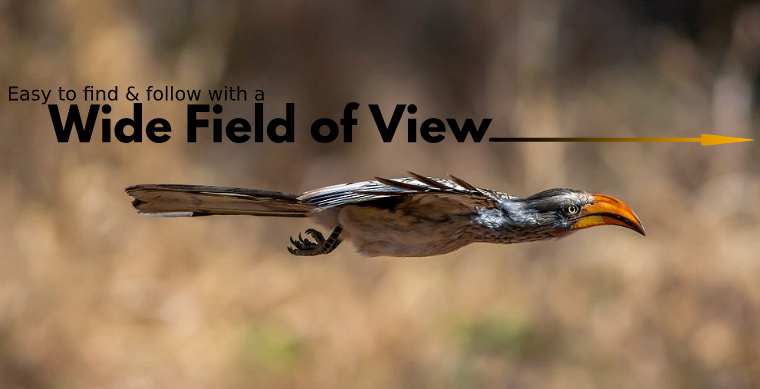
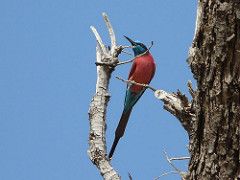 The field of view is basically the width of the scene that is in view when you look through your binoculars.
The field of view is basically the width of the scene that is in view when you look through your binoculars.
A nice wide field of view is important for most types of birding and is usually a feature that most experienced users place particular attention to when looking at potential bird watching binoculars and here is why:
A wide FOV makes it much easier to quickly find small, fast moving objects like birds and then it makes it far easier to follow them in flight, or as they hop about in the canopy above you.
It also provides a more immersive, big-picture experience.
On the down side, you do sometimes get a loss of pinpoint detail that you find in higher magnification binoculars and a view that is too wide will sometimes result in distortion at the edges of the image. However a good set will prevent/minimize these problems.
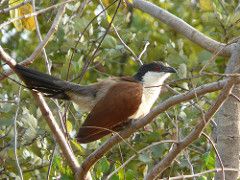 As we have already discussed the FOV is connected to the magnification and that a lower magnification usually translates to a wider view.
As we have already discussed the FOV is connected to the magnification and that a lower magnification usually translates to a wider view.
So what you are looking for is a nice wide field of view within your chosen magnification.
Indeed this is one way (amongst others) that can help you decide between two birdwatching binoculars that have the same magnification: Take a look at which has a wider field of view.
For more take a look at this article on Wide Angle Binoculars.
(importance of FOV 8/10)
With any pastime where the subject does not stay still and is fast moving, but especially important for birdwatching binoculars is the speed at which you can focus the binoculars onto your subject.
Indeed I would say this is as important at the Field of View:
This is because if you can't correctly focus on the bird quickly enough, you could easily miss a good view or even a chance of identification in some cases.
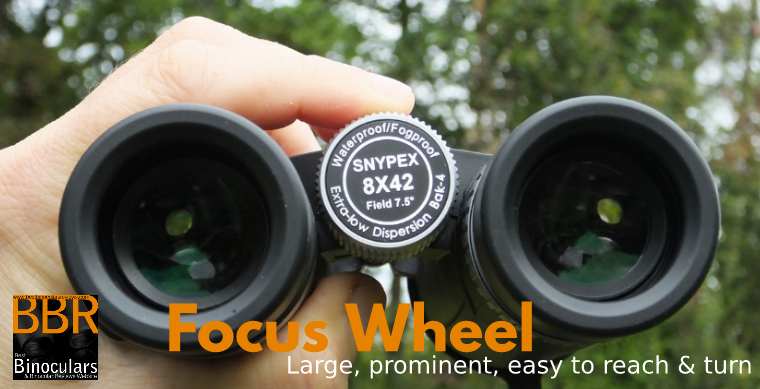
Focus Wheel
The focusing wheel should be intuitive to use, easy to reach and as simple to turn as accurately as possible.
To achieve the quickest and best focus you will usually turn past the sharpest point and then back to it and any slack in the focus mechanism messes with this strategy. The knob should turn smoothly throughout its entire range and if you detect sloppiness while turning the focus knob, it raises doubts about the overall quality of the binoculars.
The focus knob should have a nonslip surface so your fingertip gives a secure tactile feedback and tells your brain you don't have to push down hard for traction, just move your finger.
A soft rubber surface with a pattern or ridges usually works well. Also look out for a fairly large wheel that is easy to reach and that protrudes out from on top of the binoculars, which will make adjusting the focus simple and accurate as possible.
Whilst important at all times, I have found that in winter when I am wearing gloves and also often have cold, unfeeling hands, that these features become particularly important.
The Focussing Mechanism
Most binoculars use a fixed linear focusing gear (although I have seen a few that change ratio depending on how fast you turn the dial or some that have different ratios at the opposite ends of the focussing plain, but they are not very common).
Fixed Focus?
Another consideration are fixed focus binoculars (sometimes mistakenly referred to as auto focus binoculars, or sometimes slightly more accurately described as focus free or always in focus binoculars) These have a very large depth of view and once you have adjusted them to your eyesight, which only needs to be done once, they will be permanently in focus from a given distance to infinity. The obvious advantage of this is that you never have to change focus, which in terms of speed can't be beaten. On the down side,depending on the distance of the bird from your position, you won't always get the sharpest of images. If you want to learn more read my article on self focusing binoculars.
(importance 6/10)
The size and weight of your instrument can be very important in some situations, and almost completely irrelevant in others, it all depends on how, when and where you do most of your birding. The size of the objective lens usually has the biggest influence as to the weight and size of a pair of binoculars:
Compact Binoculars
Most compacts have objective lenses of between 25mm to 28mm. A light and compact binocular is much easier to carry around with you all day. Smaller binoculars may also actually let you see more because you're more likely to have them with you when you need them as you never know when a birding opportunity will arise. Compact binoculars are also great for when you're traveling, where you may not always want large high-value optics dangling from your neck and so it's nice to have binoculars that will tuck into a purse or jacket pocket.
On the down side, the smaller objective lenses cannot gather as much light as ones with larger lenses and so with all else being equal they will usually not produce as bright an image, which is especially noticeable in poor light conditions.
Full Sized Binoculars
Most full sized optics have objective lenses of between around 42mm. Whist larger and heavier binoculars may be more difficult to carry about, it may be irrelevant if you do most of your bird watching from a fixed location like a hide or in your back garden. Or for some people the benefits of a larger, heavier binocular outweigh the hassle of carrying them about:
Mid Sized Binoculars
For many people the ideal compromise will be a mid sized binocular which have objective lenses of around 32mm. These are becoming increasingly popular, and there are many good arguments in their favor. Whilst it is true that larger objectives can theoretically deliver brighter, higher resolution images, with magnifications of around 8x, it is actually quite hard to detect a qualitative difference between 42mm and 32mm objectives. In my opinion, at 8x or 10x, the quality of the optics and their coatings is far more important than the size of the lenses.
(importance of size and weight depends on how you intend to use them: 2 - 10)
This is very important if you use glasses and want to keep them on whilst using you bird watching binoculars.
Take a look at Eye Relief in my glossary for a detailed explanation, but basically it is the distance from the ocular lenses where you will see the full field of view.
Eyecups on the binoculars ensure that your eyes will be at the correct distance, but if you wear glasses, you can't get your eyes as close to the lenses, so you need to adjust the eyecups to ensure that even with your glasses on your eyes are the correct distance from the ocular lenses. Binoculars with a longer eye relief are ideal for those who wear glasses as they basically project the image further beyond the ocular lens, giving you plenty of room to play with. So if you wear glasses, you should be looking for an eye relief of at least 15mm, to see the full image full image.
The down side to long eye relief is that it usually reduces the field of view. Some people wonder if you need to wear glasses at all using binoculars, well If you are near-sighted or far-sighted, you can use your binoculars without wearing glasses and the binoculars focus will compensate, but if you have astigmatism, you will need to use your glasses.
Eye-cups are related to the eye relief as they keep the distance from the oculars to our eyes, but also help keep stray light away from your eyes while using binoculars. Some eye-cups are made from rubber and can roll up or down depending on whether you use lasses or not. The problem with these is that the constant rolling causes the eye-cups to break. Another type are eye-cups that slide rather than roll, but these can be hard to keep in place. The third type are eye-cups that twist up and down and so they can be left at any position from all the way up to all the way down, some even have click stops at regular intervals with the eye relief distance for each stop marked on the cup so you can get the perfect eye relief for your vision.
(importance 8/10 if you use glasses)
Most reasonable quality binoculars will be fine in light rain and humidity even if they are not fully waterproof which you may think would be fine, but even if you are not a "all weather" birder and don't plan on going out in bad weather, you should look for a binocular that is both water and fog proof and here is why:
Binoculars that have been completely sealed, often with o-rings will prevent any moisture from getting inside them. This seal not only prevents moisture from getting in, but will also stop dust, and debris from getting into the system which could lead to your view being spoilt.
Also look for binoculars that have been either nitrogen or argon purged. This means all the internal air has been replaced with a dry gas which will protect them from any internal fogging. This fogging can occur when you get rapid temperature changes or in places that have high humidity levels. A secondary benefit of this is that it protects the inner workings from corrosion because there is no internal moisture. For more information read my article on waterproof and fogproof binoculars
(importance 6/10)
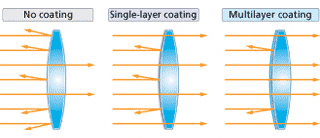 Anti-Reflective Lens Coatings
Anti-Reflective Lens CoatingsMost binoculars these days come with some sort of anti-reflective lens coatings on their lenses, which assist light transmission.
These coatings can and do make a really big difference on the brightness and quality of the image produced.
For example I have often looked through binoculars with smaller objective lenses, but with high quality anti-reflection coatings and noted that they outperform binoculars with much larger objective lenses, but with fewer or no coatings.
To give you an idea, the table below shows the average Transmittance by type of coating:
| Per Single Lens Surface | 10 Lens & Prism Surfaces | |
| No Coating: | 96% | (0.96) x Power of 10 = 0.66 66% |
| Single-Layer: | 98.5% | (0.985) x Power of 10 = 0.86 86% |
| Multilayer Coating: | 99.5% | (0.995) x Power of 10 = 0.95 95% |
Thus it is important to beware of these lower quality optics by taking careful note of how the manufacturer describes their coatings:
"Coated" means a single layer antireflection coating on some lens elements, usually the first and last elements (the only ones you can see).
"Fully Coated" means that all air to glass surfaces are coated. This is good, but not brilliant.
"Multi-Coated" means that at least some surfaces (again, usually the first and the last) have multiple layers of antireflection coatings. (A multilayer coating effectively reduces reflected light that cannot be eliminated with a single-layer coating, and increases the transmittance of light.) Multiple layers are about an order of magnitude more effective than a single layer.
"Fully Multi-Coated" - This is what you want as it means that all air to glass surfaces have received multiple layers of antireflection coatings, and this is what you want in your binoculars.
(importance 8/10)
Below is a selection of instruments that I have fully tested and reviewed and which I would recommend as great bird spotting binoculars.
|
When you factor in their price, the list of highlights on these mid-to-high end Hawke binoculars is truly impressive. Highlights on the exterior include a magnesium housing, metal eyepieces and focus wheel. Optically they are fully multi-coated, have ED glass lenses with water repellent coatings as well as phase corrected, dielectrically coated prisms The field of view is phenomenal as is the image quality and brightness.... Price: (4/6) Mid-High Value Binoculars | |||||||||||||||
|
|
Fujinon HC 8x42 binocular is outstanding and dare I say it, beautiful pair of optics that certainly stands out from the crowd. I especially like the very wide field of view, which when combined with the excellent quality optics and resulting superb image quality means that you are presented with a view that is just about as good as it gets in both good and low light conditions. Price: (5/6) High Value Binoculars | |||||||||||||||
|
|
High end binoculars from Tract Optics, the 8x42 Toric has a lot going for it and is far more than just a hunting binocular that they market it as: A tough magnesium housing protects a fully Multi-coated optical system with ED Glass Lenses, Scratch & oil-phobic coatings on external surfaces, Phase and Dielectric mirror coated Schmidt-Pechan Roof Prisms that combine well to give a superb image. Price: (5/6) High Value Binoculars | |||||||||||||||
|
|
Excellent value for money 8x42 binoculars that are both reliable and lightweight.
Highlights include a surprisingly good image quality and brightness, Multi-Coated Optical system with BAK-4 Roof Prisms, and a wide field of view making them a good option for the birder, outdoors, or nature enthusiast shopping on a budget. Price: (2/6) Low Cost Binoculars | |||||||||||||||
|
|
Like most good 8x32 binoculars these are very versatile and well-suited for a wide range of activities and viewing purposes. But added to that you get an exceptional optical performance, a beautiful ergonomic design, the best materials & robust build, are these the best mid-size binoculars ever made? Price: (6/6) Expensive Binoculars | |||||||||||||||
|
|
These 8x32 Snypex Knight D-ED binoculars come about as close as any as being the perfect general use mid-sized instrument. The highest quality optical components like APO lenses with ED glass elements, Bak-4 Dach roof prisms with phase correction and dielectric coatings all come together to deliver an image that is as good as many high quality full sized instruments... Price: (4/6) Mid-High Value Binoculars | |||||||||||||||
|
|
Excellent quality mid-sized marine binoculars ideal for speed boating, sailing, yachting or indeed kayaking and canoeing, but can also be used for a number of dry-land activities. Highlights include a tough waterproof chassis and outer armor that is very comfortable in the hands, with high levels of grip. High-quality glass and coatings deliver a bright, vibrant view with extremely low levels of color fringing and almost no softening around the edges of the view. Price: (3/6) Mid Priced Binoculars | |||||||||||||||
|
|
Not much larger or heavier than many 8x42 binoculars, these 8x56 Pirsch ED Binoculars from the German Optics company Bresser offer a bright image with a superior low light performance. Image quality is ensured with the use of ED glass lenses, phase corrected and dielectrically coated BaK4 roof prisms, whist the fog and waterproof body also contains features like an all metal focus wheel end eyepiece housing to ensure their durability. Price: (4/6) Mid-High Value Binoculars | |||||||||||||||
|
|
This Pirsch ED binocular from the German brand Bresser incorporates a very good level of optics and body components into a mid-sized, easy to carry chassis, all the time keeping half an eye on the cost, with the result being an instrument that offers a very good performance to price ratio. Main optical highlights include ED Glass lenses, a Fully Multi-Coated optical pathway and Dielectric, Phase Corrected BAK-4 Roof Prisms... Price: (4/6) Mid-High Value Binoculars | |||||||||||||||
|
|
Price wise these Carson binoculars hover right on the boundary between mid range and low cost instruments. However in terms of the components and features these sit comfortable amongst many mid level binoculars and thus look to offer some more than decent value for money. Highlights include BAK-4 roof prisms, fully multi-coated optics, plenty of eye-relief and a more than decent field of view. Price: (2/6) Low Cost Binoculars | |||||||||||||||
|
Compare the main features of all Birding binoculars on BBR Side-By-Side
View >> All Binoculars that I have reviewed ideal for Birdwatching